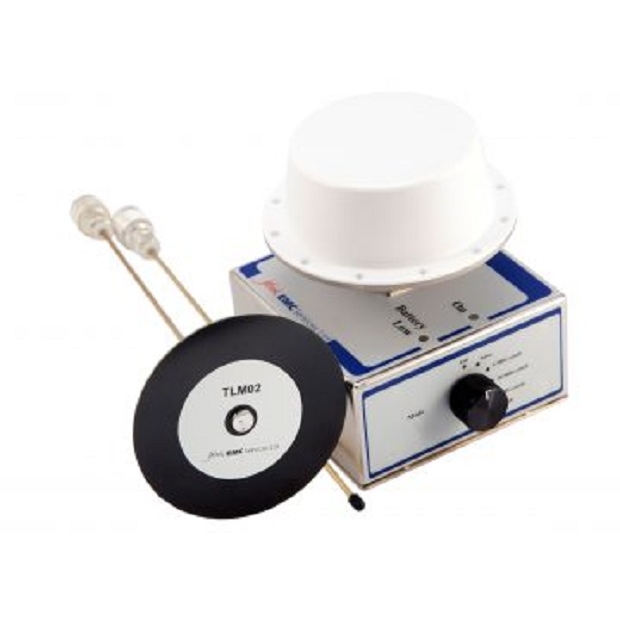The York Reference Source (YRS03) is a multi-mode, broadband noise and comb source that is capable of producing a continuous noise output or a comb of frequencies within the 10 MHz to 6 GHz range, with the step size being selected by the user.
This noise generator enables observation of details over the full spectral range, while the comb generator allows for the reference signal output and noise floor to be viewed simultaneously, and the frequency accuracy of measurement of equipment to be checked.
The YRS03 is a compact and battery powered, allowing operation as an electrically small source, which minimises the effect of the YRS03 itself when characterising the electromagnetic environment. The YRS03 is housed in a metal enclosure so that it can be mounted in direct contact with a metal ground plane as may be required by some tests.
The YRS03 is supplied with a 50 Ω N-type output connector for direct connection to conducted measurement systems. For radiated operation, antennas can be attached to the unit’s output connector.
Three antennas, one monocone and two monopole optimised for different frequency bands, are available.
The YRS03 is an ideal source for carrying out checks on Open Area Test Sites (OATS) and fully- or semi-anechoic chambers.
NOISE MODE
Frequency Range
- 10 MHz to 6 GHz direct connection into 50 Ω system
- 30 MHz to 6 GHz radiated using MON03 monopole and MCN03 monocone antennas
Temperature stability
- <+/-1 dB, at an ambient temperature of 15 °C to 30 °C
- <+/-1.5 dB, at an ambient temperature of 5 °C to 40 °C
Time Stability
- <1 dB typical over a 12 month period
Operating time
- 6.5 hours typical with alkaline cells
COMB MODE
Frequency Range
- 10 MHz to 6 GHz direct connection into 50 Ω system
- 30 MHz to 1 GHz radiated using TLM02 and MON03 monopole antennas
Comb Signal Step size, Selectable between
- 5 MHz (5 MHz, 10 MHz, … 3 GHz min.)
- 10 MHz (10 MHz, 20 MHz,… 3 GHz min.)
- 20 MHz (20 MHz, 40 MHz, … 6 GHz min.)
- 40 MHz (80 MHz, … 6 GHz min.)
Temperature stability
Amplitude
- <+/-1 dB, at an ambient temperature of 15 °C to 30 °C
- <+/-1.5 dB, at an ambient temperature of 5 °C to 40 °C
Frequency
- <+/- 0.5 ppm from 5 °C to 40 °C
Time stability
- <1 dB (typical over 12 month period)
- <+/-1 ppm typical over a 12 month period
Operating Time
- 14 hours typical with alkaline cells


